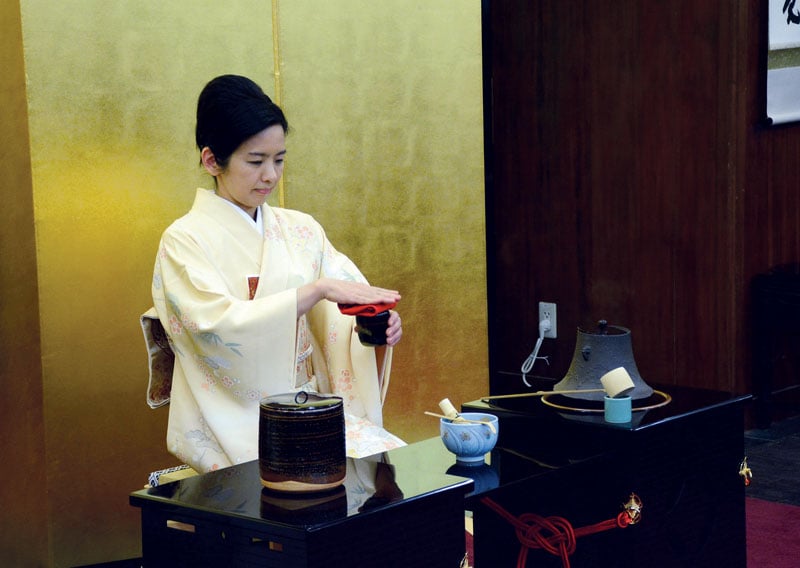
ISLAMABAD:
In yet another showcase of the multi-faceted Japanese culture, a live demonstration of the Japanese tea ceremony — chanoyu or sado — was organised at the country’s embassy on Thursday evening.
Chanoyu literally means “hot water for tea”. Also known as the “Way of Tea”, the ceremony is a cultural activity involving the ceremonial preparation and presentation of matcha, powdered green tea and the art of its performance is called temae.
Clad in traditional kimonos, wives of Japanese diplomats skillfully demonstrated the tea ceremony in the presence of a sizeable gathering in a makeshift tea room.
They prepared the quintessential Japanese green tea, matcha, together with traditional Japanese sweets to balance out the bitter taste, serving the exotic blend with poise and elegance. The ceremony was observed in complete silence, emanating a peaceful aura.
The tea room setting serves as a common platform for the interaction between the host, guests and tea utenstils. Much like any formal ceremony, the Japanese tea ceremony involves its own set of etiquettes.
The process of preparing tea also involves drawing attention into the choreographed rituals.
When presented with a bowl of tea, a guest will reflect upon the warm of the bowl and the bright green hue of the matcha against the surface of the bowl before he or she begins to drink.
Japanese Ambassador Hiroshi Inomata addressed the occasion, saying Japanese tea ceremony is a traditional and unique cultural aspect of Japan. He added the act of preparing the powered green tea is an art which requires many years of study to master.
The ambassador underlined that the process is not just about drinking tea, but is about the aesthetics of preparing and serving a bowl of tea from one’s heart. “The traditional Japanese tea ceremony is more than just enjoying tea; it is a spiritual experience that you would be reminded to respect others, to feel harmony and purify yourself in the tranquility” he added.
Inomata, who was the host, responded to the subtle gestures of tea servers. “It is an acquired taste,” said Dr Shahnaz, a guest, adding that “It has a herbal aroma in lukewarm water, which is markedly different from our traditional Pakistani chai,” she added.
Zen Buddhism was a primary influence in the development of the Japanese tea ceremony. In the tradition, tea gatherings are classified as informal chakai or formal chaji tea gathering. A chakai is a relatively simple course of hospitality that includes confections, thin tea, and perhaps a light meal. On the other hand, a chaji is a much more formal gathering, usually including a full-course kaiseki meal followed by confections, thick tea, and then thin tea. A chaji can last up to four hours.
Published in The Express Tribune, January 23rd, 2015.
COMMENTS (1)
Comments are moderated and generally will be posted if they are on-topic and not abusive.
For more information, please see our Comments FAQ


































































Just a cup of Earl Grey tea, with or without a lemon peel. With cream and two spoons of sugar will do.